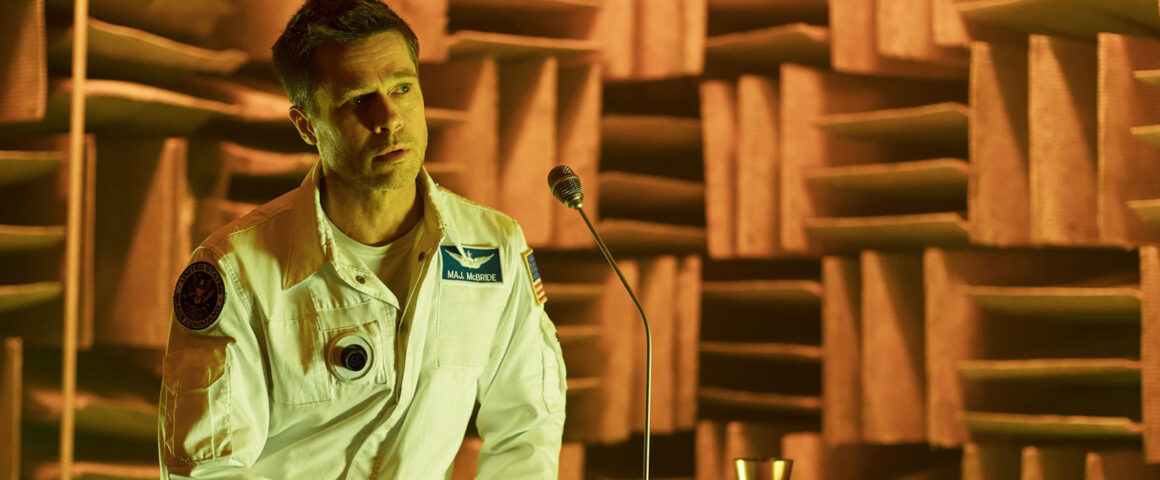Director James Gray, whose last film, “The Lost City of Z,” garnered serious praise upon release in 2016, has continued his win streak in the exploratory sci-fi film Ad Astra, the Latin phrase for “to the stars.” This Brad Pitt vehicle stands as a powerful character study within a plausible near-future universe, with a hefty yet sluggish plot that is more about mental health and existentialism than it is about rockets, gunfire and fisticuffs, sans gravity.
The well-cast Pitt (“Once Upon a Time … in Hollywood”) is subtle and restrained, yet capable and perfectly nuanced, matching the persona of jaded astronaut Roy McBride; his quest across the universe is truly for validation from his long-lost father, Lima Project commander H. Clifford McBride (Tommy Lee Jones, “The Homesman”).
Where the Charlie Hunnam-led “The Lost City of Z” boasted exquisite frames, an ambitious concept and deep-seated internal conflict played out across sprawling vistas, the same model is applied to Ad Astra, with some of the year’s most impressive cinematography (thanks to Hoyte van Hoytema, “Dunkirk”) and journeys of the mind. Gray’s jaunt into science fiction certainly succeeds, but the plot could have worked on Earth — with the McBride reunion rivaling that of Percy (Hunnam) and Jack Fawcett (Tom Holland), his “The Lost City of Z” father-son duo.
Gray’s filmmaking tends to examine paternal relationships, often succeeding; his exotic settings only add more depth and aesthetic value. In Ad Astra, Gray puts the McBrides under the microscope — presenting what exploration (distant space travel, in this case) can do to humanity, often severing ties. He also happens to leave viewers with a bevy of memorable set pieces — from speedy moon rovers to space-dwelling animal test subjects and debris inside the rings of Neptune.
Gray’s quest from the moon (a trip McBride flies commercially), to an underground lake on Mars, to the endless straits toward Neptune, amount to a remarkably crafty and tonally pleasing film — one that leaves an indelible mark and offers a realistic look at the future of space travel.
More specifically, Ad Astra picks up just after McBride suffers a serious injury after falling from space — as U.S. Space Command (SpaceCom) equipment becomes affected by strong power surges. McBride is soon recruited for a top-secret mission to identify and root out the source of the surges. He is told that the emissions have been linked to energy readings near Neptune, where a manned mission — the Lima Project — ventured to the outer reaches of the solar system to chart signs of extraterrestrial life. The mission was led by space legend Clifford McBride (Jones), but SpaceCom lost contact 16-years prior.
SpaceCom relies on the younger McBride to track down the remnants of the Lima Project, which may or may not still be sustaining life. In order to do so, McBride must flee his pedestrian life on Earth, with his unhappy wife Eve (Liv Tyler, “Wildling”), catch a commercial flight to the moon, board the Cepheus for a flight to Mars and from there use voice messages to reach Clifford. Clifford’s former associate, Colonel Pruitt (“The Hunger Games: Mockingjay – Part 2”), informs the younger McBride that his father may have gone rogue, threatening the mission and thus life on all outposts of the solar system. McBride, a space lifer like his father, then sets course and pulls out all the stops to find his father, enlisting the help of Mars outpost leader Helen Lantos (Ruth Negga, “Warcraft”).
By the film’s final act, it is apparent that Gray does not bring Ad Astra anywhere near the realm of “space opera,” or high-concept genre film. While visually alluring, the film is more psychological and character driven than narratively pleasing, though taken in its entirety, it remains an ambitious and well-executed experiment in realistic science fiction. The film never demands its viewers to strenuously suspend their disbelief, nor does it feel aimless or poorly captured.
Its strong production values, including competent CGI, sweeping ethereal shots and expressive camerawork (namely the close-ups on Pitt) allow this film to stack up nicely against similar projects, like Christopher Nolan’s “Interstellar” or Steven Soderbergh’s “Solaris.” (It also boasts half the cast of “Space Cowboys”). Still, it is more than a sum of its parts. Ad Astra is a clever, celestial adventure that pits man against the universe and questions the spatial constraints of space travel. It also begs the question of whether mankind is capable of managing its expansion into space. There’s still no clear answer.



